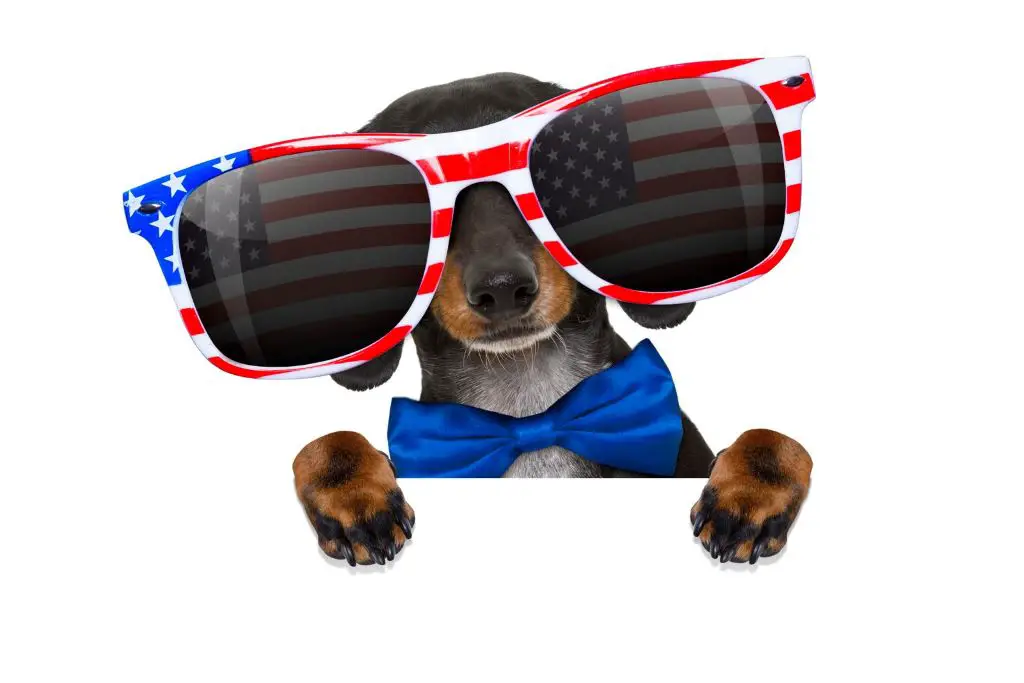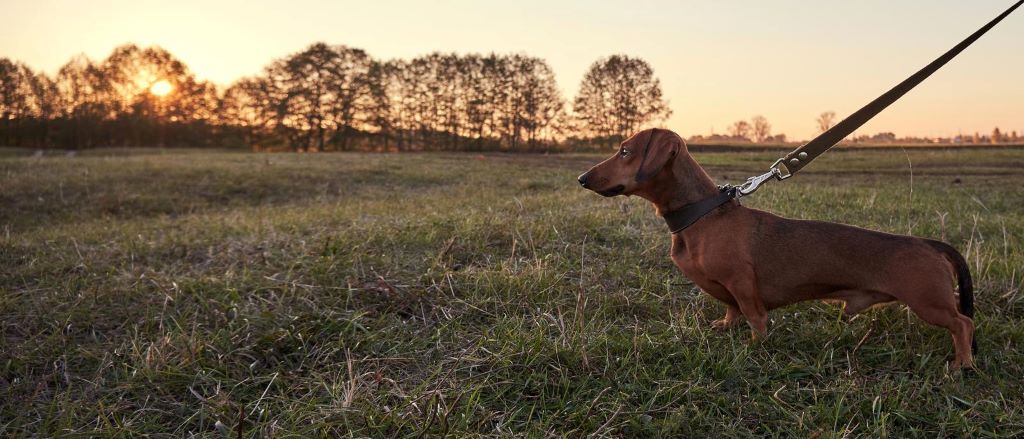You may not know this, but the Dachshund breed has a fascinating history that spans centuries and continents. Originally bred in Germany for hunting purposes, these small and tenacious dogs eventually made their way to America and became beloved pets. But the journey of the Dachshund from Germany to America was not without its challenges and changes.
As you read on, you will discover how this breed went from being a prized hunting companion to a popular household pet. You will also learn about some famous Dachshunds in American history and the unique characteristics that make this breed so beloved.
Whether you are a Dachshund owner or simply a dog lover, you will come away with a newfound appreciation for these adorable and loyal pups.
History of the Dachshund Breed in Germany
So, you might be thinking that the history of the Dachshund breed in Germany isn’t really relevant to their journey to America, but understanding their origins can give us a better appreciation for their unique characteristics and why they became so popular.
The Dachshund breed was first developed in Germany in the 16th century as a hunting dog. They were bred to hunt badgers, foxes, and other small animals that lived in burrows. Their long, slender bodies and short legs made them perfectly suited for this task.
Dachshund breeding practices in Germany were quite strict. They were only bred with other Dachshunds to maintain the purity of the breed. The first breed club was established in 1888, and their popularity continued to grow throughout the 20th century.
Dachshunds were not only popular for hunting, but they also became beloved pets due to their loyal and affectionate nature. Dachshunds also played a significant role in German folklore. They were often depicted as brave and cunning, using their hunting skills to outsmart their prey.
This folklore helped to solidify their status as a beloved national symbol in Germany. So, while the history of the Dachshund breed in Germany may not seem directly related to their journey to America, it is an important part of their story and helps to explain their enduring popularity.
Famous Dachshunds in American History
You’re in for a treat as we explore the world of famous Dachshunds in American history. These little pups have made their mark, from being beloved Presidential pets to stealing the spotlight in Hollywood. Let’s not forget their influence as cultural icons.
Get ready to discover the stories of these iconic Dachshunds.
Presidential Pets
As a history buff, you’ll be fascinated to know that many U.S. presidents have owned dachshunds as pets. These short-legged dogs are known for their loyalty and affection, making them perfect companions for powerful leaders.
From Calvin Coolidge to Joe Biden, dachshunds have been a popular choice for presidential pets. Dachshunds in politics have even played a role in some presidential campaigns. During the 1960 election, John F. Kennedy was gifted a dachshund named Dunker by a supporter.
The dog quickly became a symbol of Kennedy’s youth and vitality, and even appeared in campaign ads. So, not only have dachshunds brought joy to the White House, they’ve also made their mark on American political history.
Hollywood Stars
Imagine walking down the red carpet with your favorite Hollywood star and their adorable furry companion by their side. It’s no secret that Hollywood loves dachshunds, and they have become quite the fashion statement. From their cute little sweaters to their stylish collars, dachshunds have become a staple in the fashion world.
In addition to their fashion sense, dachshunds have also made numerous cameos in Hollywood films. Some notable mentions include the dachshunds in the movie “Wiener-Dog” and the dachshund in the popular TV show “Better Call Saul.”Hollywood has truly embraced the lovable personality and unique appearance of the dachshund, making them a popular companion for many A-list celebrities.
Cultural Icons
It’s fascinating to see how cultural icons from different parts of the world have embraced the charm and playfulness of the dachshund breed. From Japan to the United States, the dachshund has captured the hearts of people everywhere.
One way this love is showcased is through dachshund merchandise. You can find anything from t-shirts to coffee mugs to phone cases, all adorned with the image of this lovable breed. It’s a testament to the impact these dogs have had on popular culture, and how they’ve become symbols of fun and joy.
But it’s not just merchandise that showcases the dachshund’s cultural significance. Dachshund art is another way this breed has become an icon. Whether it’s through paintings, sculptures, or even tattoos, artists have been inspired by the unique look and personality of these dogs. Their long bodies and short legs make for interesting visual depictions, and their playful nature makes them perfect subjects for lighthearted art.
It’s clear that the dachshund has become more than just a dog breed; it’s a cultural icon that will continue to be celebrated for years to come.
The Dachshund’s Changing Role in Society
The Dachshund’s evolution from a badger-hunting dog to a beloved companion has played a significant role in shaping their changing role in society. Here are some ways the evolution of their role has impacted society:
1. Increased popularity as pets: The Dachshund’s friendly nature and adaptable size has made them a popular choice as pets. Their presence in homes has brought joy and companionship to countless families.
2. Therapy dogs: Due to their friendly nature, Dachshunds have become popular as therapy dogs. They provide comfort and support to those in need, whether it be in a hospital or nursing home.
3. Service animals: Dachshunds have also been trained as service animals for those with disabilities. They can assist with tasks such as retrieving items, opening doors, and providing emotional support.
4. Cultural significance: Dachshunds have become a cultural symbol of Germany and are often featured in art, literature, and film. Their presence in popular culture has further cemented their status as beloved companions.
Overall, the evolution of the Dachshund’s role in society has had a positive impact on those around them. Their friendly nature and adaptability has made them valuable pets, therapy dogs, and service animals, while their cultural significance has only added to their appeal.
Characteristics of the Dachshund Breed
So you’re curious about the Dachshund breed’s characteristics? Well, let’s start with their physical appearance – they’re famously known for their long, hot dog-like bodies and stubby legs.
But don’t let their small size fool you; they’re incredibly brave and tenacious. As for their temperament and personality, they’re loyal, affectionate, and playful – making them great family pets. However, they can also be stubborn and independent at times.
Lastly, it’s important to note that Dachshunds can be prone to certain health issues, such as back problems and obesity, so proper care and attention to their health is crucial.
Physical Appearance
With their long, sausage-like bodies and short legs, dachshunds are like hot dogs on legs, making them one of the most unique and recognizable dog breeds in the world. Their physical appearance is one of the defining characteristics of the breed, and it’s no surprise that they are often referred to as ‘wiener dogs’or ‘sausage dogs’.
Here are some physical characteristics that make them stand out:
• Dachshunds come in three coat varieties: smooth, wirehaired, and longhaired. The smooth coat is short and shiny, while the wirehaired coat is rough and bristly. The longhaired coat is silky and flowing.
• Their ears are long and floppy, hanging down to the sides of their heads. This makes them prone to ear infections, so it’s important to keep them clean and dry.
• Dachshunds have large, expressive eyes that are set wide apart. They are often described as having a ‘begging’or ‘pleading expression that melts the hearts of their owners.
Overall, dachshunds are a unique and charming breed with a distinctive appearance that sets them apart from other dogs. Their physical characteristics are an important part of their breed standards and are carefully considered in breeding practices to maintain the integrity of the breed.
Temperament and Personality
Now that you know the physical traits of dachshunds, let’s explore their temperament and personality. These dogs are known for their loyalty and devotion to their owners. They are also playful, curious, and intelligent, making them great companions for families and individuals alike. However, they can also be stubborn and independent, which can make training a challenge.
To ensure your dachshund becomes a well-behaved member of your family, it is important to start training and socializing them early. Training techniques should focus on positive reinforcement, as dachshunds respond well to praise and treats. Socialization methods should involve exposing them to different people, animals, and environments to help them feel comfortable and confident in any situation. By providing consistent training and socialization, you can help your dachshund become a happy and well-adjusted member of your family.
By using these techniques and methods, your dachshund can develop into a well-mannered and friendly dog. In addition to providing them with a loving home, you are also serving others by ensuring that your dog is well-behaved in public and around other people and animals. So, take the time to train and socialize your dachshund, and you will be rewarded with a loyal and loving companion.
Health and Care
To ensure your dachshund stays healthy, you need to take them for regular check-ups with the veterinarian and provide them with a balanced diet and plenty of exercise. Dachshunds are prone to certain health issues such as spinal problems, obesity, and dental issues, so it’s crucial to stay on top of their health.
A healthy diet for a dachshund includes high-quality protein, moderate fat intake, and limited carbohydrates. Consult with your veterinarian to determine the best diet for your dog’s specific needs.
In addition to diet and exercise, grooming and hygiene are also important factors in maintaining your dachshund’s health. Regular grooming can prevent skin infections and can also help identify any lumps or bumps that may require veterinary attention. Keep your dachshund’s ears clean and dry, as they’re prone to ear infections. Brush their teeth regularly to prevent dental issues, which can lead to other health problems.
By taking a proactive approach to your dachshund’s health and care, you can ensure they live a long and healthy life.
Future of the Dachshund Breed
You can’t help but wonder what lies ahead for these little hot dog dogs. Their future is as uncertain as a cloud on a windy day, but one thing is for sure, their loyal and loving personalities will never go out of style.
As breeding advancements continue, we may see a rise in new colors or patterns, or even a decrease in certain health issues. However, with popularity trends constantly shifting, it’s important to remember the responsibility that comes with breeding these dogs.
One way to ensure the future of the breed is to prioritize responsible breeding practices. This means breeding for health and temperament, rather than simply for appearance or profit. It also means carefully screening potential owners to ensure they can provide a loving and suitable home for these dogs.
As more people become aware of the importance of responsible breeding, we may see a shift in the overall health and well-being of the breed.
Another important aspect of the future of the Dachshund breed is education. Educating potential owners about the breed’s unique needs and characteristics can lead to better care and understanding for these dogs. Additionally, educating the public about the importance of adoption and rescue can help reduce the number of dogs in need of homes.
With a focus on responsible breeding and education, the future of the Dachshund breed can be bright and full of loving homes.
Frequently Asked Questions
How do Dachshunds adapt to different climates and environments?
Adapting to new environments can be challenging for dachshunds due to their breed specific traits. They may struggle in extreme climates or with certain terrains, but with proper care and training, they can thrive in a variety of settings.
What is the average lifespan of a Dachshund?
Did you know that the average lifespan of a dachshund is 12-16 years? Factors affecting their lifespan include diet, exercise habits, and genetic predisposition to health issues. Regular vet checkups and proper care can help extend their lifespan.
What are some common health issues that affect Dachshunds?
Do you know the common health issues that affect dachshunds? Genetic predispositions and lifestyle factors can increase risks of back problems, obesity, and dental issues. Prevention tips and treatment options are available.
Can Dachshunds be trained for specific tasks or jobs?
You can train dachshunds for specific tasks and job roles. They excel in hunting, tracking, and even therapy. Career options include search and rescue, medical alert, and emotional support. Task training strengthens the bond between you and your furry friend.
How do Dachshunds compare to other small dog breeds in terms of temperament and personality?
Compared to other small breeds, Dachshunds are known for their lively and affectionate personalities. However, proper Dachshund socialization is crucial to prevent aggression. Their energy levels vary, but daily exercise is important for their physical and mental wellbeing.
Conclusion
Just like the Dachshund, you’ve gone through a journey of your own. You may have faced obstacles and challenges, but you’ve persevered and made it to the end.
The Dachshund’s journey is a reminder that change is inevitable, but it’s up to us to adapt and thrive. Just like the Dachshund, we must embrace our unique characteristics and use them to our advantage.
So, as you continue on your own journey, remember the Dachshund’s story and let it inspire you to keep moving forward.









